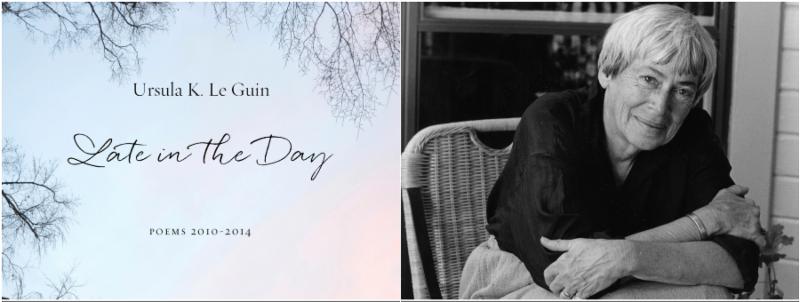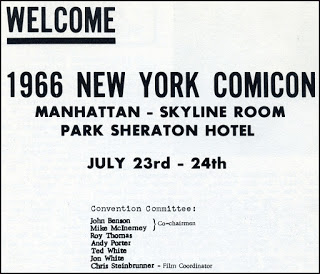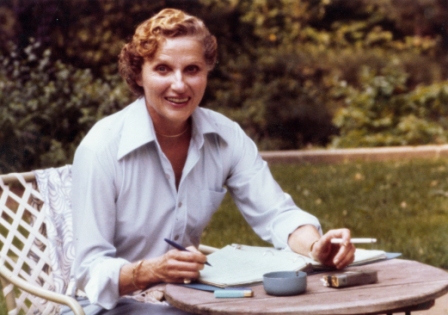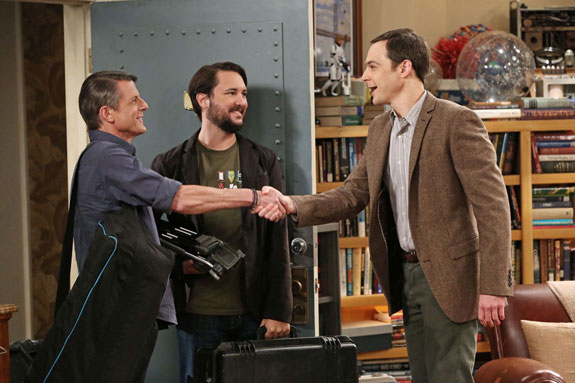(1) PRELIMINARY PUPPIES. Vox Day issued his first “preliminary recommendations” today: “Rabid Puppies 2016: Best New Writer” (Preliminary, since he may change them based on feedback about eligibility, or for other reasons.)
To kick things off, we’ll begin with the Campbell Award: Best New Writer category:
- Pierce Brown
- Cheah Kai Wai
- Sebastien de Castell
- Marc Miller
- Andy Weir
There was a noteworthy exchange in the comments.
[Phil Sandifer] Just for the record, Vox, the only reason Andy Weir wasn’t on the ballot last year was the Puppies. Without you, the Campbell nominees last year would have been Chu, Weir, Alyssa Wong, Carmen Maria Marchado, and Django Wexler.
[VD] Oh, Phil, you’re always so careless. That is not the only reason. It is a reason. Had you SJWs favored Weir over Chu, he would have also been on the ballot.
In any event, since you all are such champions of Weir, I’m glad we will all be able to join forces and get him nominated.
(2) GRRM REQUESTS. After announcing that the Locus Recommended Reading List is online, George R.R. Martin explicitly said –
Just for the record, before the issue is raised, let me state loudly and definitively that I do not want any of my work to be part of anyone’s slate, this year or any year. But I do feel, as I have said before, that a recommended reading list and a slate are two entirely different animals.
— an announcement whose timing may be more relevant today than it would have been yesterday.
(3) LOCUS SURVEY. You can now take the Locus Poll and Survey at Locus Online. Anyone can vote; Locus subscriber votes count double. Voting closes April 15.
Here is the online version of the 46th annual Locus Awards ballot, covering works that appeared in 2015.
In each category, you may vote for up to five works or nominees, ranking them 1 (first place) through 5 (fifth).
As always, we have seeded the ballot with options based on our 2015 Recommended Reading List [this link will open a new window], mainly because this greatly facilitates tallying of results. However, again as always, you are welcome to use the write-in boxes to vote for other titles and nominees in any category. If you do, please try to supply author, title, and place of publication, in a format like the options listed, where appropriate.
Do not vote for more than one item in a category at the same rank (e.g. two selections ranked 1st); if you do, we will disregard your votes in that category.
File 770 is seeded in the Best Magazine or Fanzine category and would cherish your fifth place votes. Or twenty-fifth, for that matter – the competition is formidable.
(4) IT IS THE END MY FRIEND. And perhaps this is the right place to admire John Scalzi’s Whatever post title: “The End of All Things on the 2015 Locus Recommended Reading List”.
(5) STATISTICS. Brandon Kempner at Chaos Horizon began the month of February by “Checking Back in with the SFWA Recommended Reading List”. He prepared a change table and interpreted the rising fortunes of various novels, beginning with the greatest uptick —
What does this tell us? That Lawrence M. Schoen’s Barsk has emerged as a major Nebula contender, despite being lightly read (as of January 30th, this only has 93 ratings on Goodreads, 31 on Amazon, much much lower than other Nebula/Hugo contenders). That’s due in part to Schoen’s late publication date: the novel came out on December 29, 2015. That’s a tough time to come out, as you get lost in the post-Christmas malaise. A Nebula nomination would drive a lot of attention to this book. Schoen now seems like a very good bet for the Nebula, particularly when we factor in that he received Nebula nominations in the Best Novella category in 2013, 2014, and 2015. There’s clearly a subset of Nebula voters that really like Schoen’s work; a Best Novel nomination might be a spark that gets him more read by the rest of us.
(6) CONGRATULATIONS SCOTT EDELMAN. He did it! Scott Edelman celebrates a special sale in “Never give up, never surrender: My 44-year question to sell a short story to Analog”.
I’ve lost track of how many submissions I made to Analog during the intervening years, first to Ben Bova, then Stan Schmidt (for more than three decades!), and now Trevor Quachri. Were there 25 short stories? Fifty? It’s probably been more than that, but I don’t know for sure. And it doesn’t really matter.
What matters is—in the face of rejection, I kept writing.
What matters is—in the face of rejection, I kept submitting.
What matters is—I never took it personally. I knew that I wasn’t the one being rejected—it was only the words on the page that weren’t the right match.
(7) WILL EISNER AUCTION. The Comic Book Legal Defense Fund is auctioning books from Will Eisner’s personal collection.
Will Eisner wasn’t just the godfather of comics, a creative force who changed the face of modern comics — he was also a staunch advocate for the freedom of expression. In celebration of Eisner’s indomitable talent and advocacy, CBLDF is delighted to offer up for auction books from Eisner’s own personal collection!
All books in this collection come from the late, great Will Eisner’s personal library. The books from this collection are bookplated with Eisner’s own personalized bookplate, featuring his most famous creation, The Spirit. Most of the books in this collection are signed and personalized to the master himself by creators whom Eisner inspired over his illustrious 70-year career
The items are on eBay. The CBLDF’s post has all the links to the various lots.
(8) FAN ART AT RSR. I see that with help from eFanzines’ Bill Burns, Rocket Stack Rank terrifically upgraded its “2016 Fan Artists” content. Gregory N. Hullender explains.
With the help of Bill Burns, we’ve updated the Best Fan Artist page at RSR to include cover art from eFanzines (plus a few that Bill scanned by hand). This doubled the number of artists and tripled the number of images, making it comparable to the Pro Artist page.
(9) INCONCEIVABLE. Japan’s huge convention Comic Market, aka Comiket, which draws half a million fans (in aggregate over three days) expects to be bumped from its facilities in 2020. What could bump an event that big? The Olympics. Anime News Network reports —
Tokyo Big Sight, the convention center where Comiket is usually held, announced earlier that it would not be able to hold the convention between April 2019 and October 2020. Event spaces have been closing throughout the Tokyo area for the past decade. Tokyo Big Sight has also announced that industry booths at this summer’s Comiket would close after two days (instead of the usual three) to accommodate construction work to expand the building for the upcoming Olympics.
(10) TAKE YOUR HANDS OFF THE CANON. We might call this a contrarian view.
Given all the weird shit she's done since HP7, I do not accept that JKR is qualified to determine canon anymore. https://t.co/f8qDZODEe3
— Escaped from Dumpster to Elsewhere (@bruhsam) February 1, 2016
(11) TODAY IN HISTORY
- February 1, 2003 – Space shuttle Columbia broke apart during re-entry, killing all seven astronauts aboard.
(12) TODAY’S BIRTHDAY BOY
- February 1, 1954 – Bill Mumy, soon to be seen in Space Command.
(13) WOODEN STARSHIP. A Washington Post article about the renovation of the original Starship Enterprise model reveals it was mostly made from big pieces of wood. When ready, the Enterprise will be displayed in a slightly more prestigious spot .
Collum said the model had long hung in the gift shop of the Air and Space Museum on the Mall. Now it is headed for the renovated Milestones of Flight Hall there.
“The historical relevance of the TV show, and this model, has grown,” he said. “So it’s now being brought up into the limelight, and it’s going to be in the same gallery as the ‘Spirit of St. Louis’ [and] the Apollo 11 command module.”
(14) HOW GAMES INSPIRE ENGAGING FICTION. N. K. Jemisin in “Gaming as connection: Thank you, stranger” talks about the aspect of game play that challenges her as a writer. (Beware spoilers about the game Journey.)
I see a lot of discussion about whether games are art. For me, there’s no point in discussing the matter, because this isn’t the first time I’ve had such a powerful emotional experience while gaming. That’s why I’m still a gamer, and will probably keep playing ’til I die. This is what art does: it moves you. Maybe it makes you angry, okay. Maybe it makes you laugh. Not all of it is good, but so what? There’s a lot of incredibly shitty art everywhere in the world. But the good art? That’s the stuff that has power, because you give it power. The stuff that lingers with you, days or years later, and changes you in small unexpected ways. The stuff that keeps you thinking. Right now I’m trying to figure out how to recreate that game experience with my fiction.
(15) SF IN CHINA. Shaoyan Hu discusses“The Changing Horizon: A Brief Summary of Chinese SF in Year 2015” at Amazing Stories. Quite an impressive roundup.
Fandoms
There were more than 70 college SF clubs in China in year 2015. Compared to 120 clubs in 2012, the number was reduced. However, two independent fandoms, Future Affairs Administration in Beijing and SF AppleCore in Shanghai, were still very active.
SF AppleCore is the most important fandom in Eastern China. Last year, in addition to orchestrating the annual Shanghai Science Fiction and Fantasy Festival, SF AppleCore continued to operate on a regular base to bring about the public SF events such as AppleCore Party (speeches and gatherings of fans) and AppleCore Reading Group.
Future Affairs Administration was the backbone behind the 2016 Worldcon bid for Beijing. Although the bid was not successful, they organized the Chinese Nebula Award ceremony in 2014. Last year, this fandom was consolidated into a media platform for SF and technology related information, although the function for fan events still remained.
(16) WORLDS OF LE GUIN. The Kickstarter fundraising appeal for Arwen Curry’s documentary Worlds of Ursula K. Le Guin has begun. So far, 514 backers have pledged $39,699 of the $80,000 goal. The SFWA Blog endorsed it today:
Viewers will accompany Le Guin on an intimate journey of self-discovery as she comes into her own as a major feminist author, inspiring generations of women and other marginalized writers along the way. To tell this story, the film reaches into the past as well as the future – to a childhood steeped in the myths and stories of disappeared Native peoples she heard as the daughter of prominent 19th century anthropologist Alfred Kroeber.
Le Guin’s story allows audiences to reflect on science fiction’s unique role in American culture, as a conduit for our utopian dreams, apocalyptic fears, and tempestuous romance with technology. Le Guin, by elevating science fiction from mind candy to serious speculation, has given permission to younger mainstream writers like Michael Chabon, Zadie Smith, and Jonathan Lethem to explore fantastic elements in their work.
(17) CGI OVERDOSE? At Yahoo! News, “These ‘Star Wars’ Blooper Reels Show Exactly Why the Prequels Failed”.
The blooper reels for the Star Wars prequel films have been available for a while, but there’s a noticeable trend with all of them. Nearly every blooper — genuinely funny or otherwise — is filmed within a green screen backdrop.
[Thanks to Janice Gelb, JJ, Petrea Mitchell, and John King Tarpinian for some of these stories. Title credit goes to File 770 contributing editor of the day Gregory N. Hullender.]









